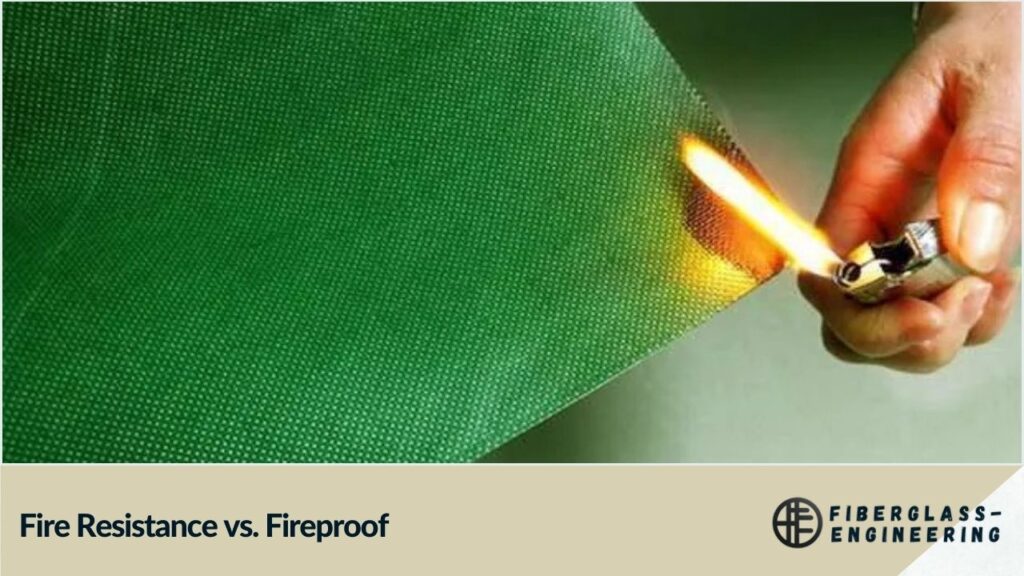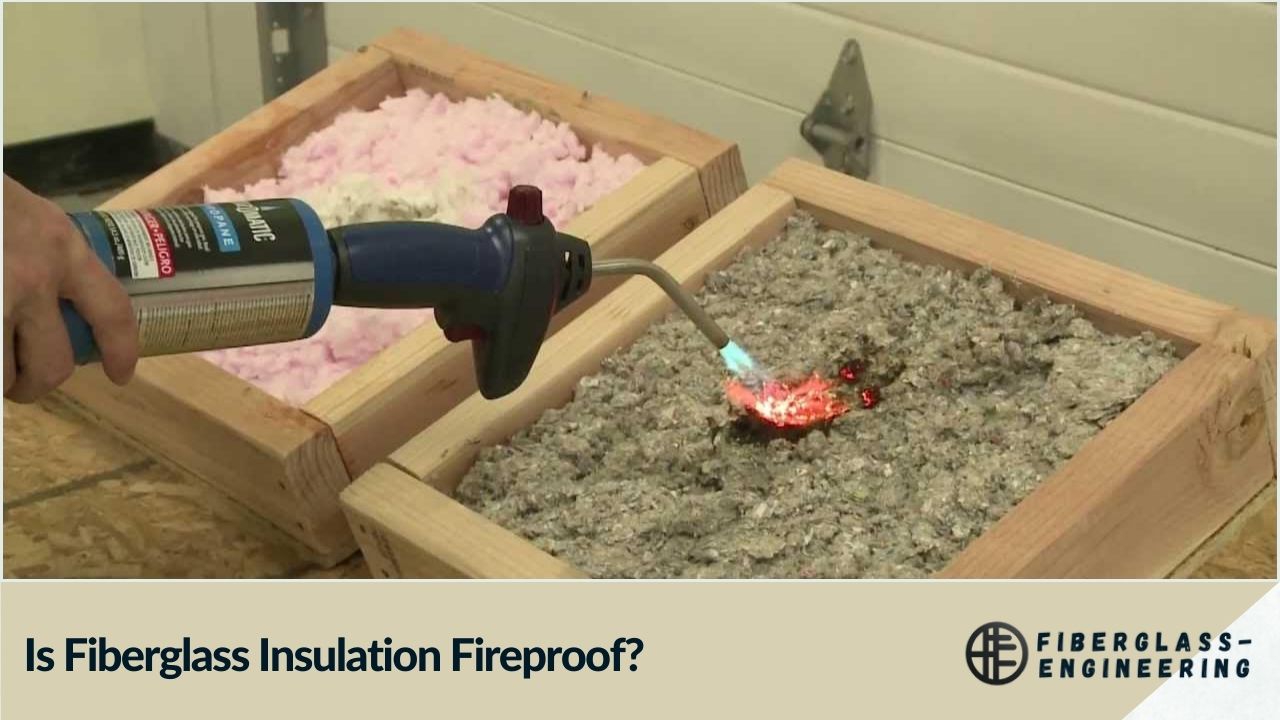Fiberglass insulation is a popular choice for homeowners and builders due to its excellent thermal properties and cost-effectiveness. However, when it comes to fire safety, many people wonder: is fiberglass insulation fireproof? To answer this question, we need to delve into the properties of fiberglass insulation and its behavior in fire situations.
The Composition of Fiberglass Insulation
Fiberglass insulation is made from fine glass fibers, which are derived from melted sand or recycled glass. These fibers are then combined with a binding agent, typically a plastic polymer, to create the final product. The inherent properties of glass make fiberglass insulation naturally resistant to fire, but it's important to understand that it is not entirely fireproof.
Fire Resistance vs. Fireproof

It's crucial to distinguish between "fire-resistant" and "fireproof" materials. Fiberglass insulation is fire-resistant, not fireproof. This means that while it doesn't readily catch fire or contribute significantly to the spread of flames, it can still be affected by extreme heat and fire conditions.
Fire Retardant Properties
Fiberglass insulation is often treated with fire retardant chemicals to enhance its fire-resistant properties. These chemicals work by increasing the combustion temperature of the material and slowing down the spread of flames. However, it's important to note that these treatments do not make the insulation completely fireproof.
The term "fire retardant" can be misleading. It doesn't mean that the material will never ignite; rather, it indicates that the material will take longer to catch fire when exposed to a flame source. Insulation materials treated with fire retardants can withstand fire exposure for about three times longer than untreated materials.
Behavior of Fiberglass Insulation in Fire Conditions
When exposed to high temperatures, fiberglass insulation will not burn in the traditional sense. Instead, it begins to melt at temperatures around 1,000°F (538°C). This melting process can actually help to slow the spread of fire by creating a barrier that inhibits oxygen flow.
However, it's important to note that while the glass fibers themselves don't burn, the binding agents used in fiberglass insulation can char and produce smoke when exposed to fire. This smoke can be toxic and pose a significant health risk in the event of a fire.
Kraft Paper Backing: A Potential Fire Hazard
Many types of fiberglass insulation come with a kraft paper or foil backing. This backing can present a fire hazard, as paper and foil are more readily combustible than the fiberglass itself. When installing fiberglass insulation, it's crucial to follow proper installation guidelines to minimize this risk.
Proper Installation for Fire Safety
The effectiveness of fiberglass insulation's fire-resistant properties largely depends on proper installation. Gaps, compression, or improper fitting can compromise its performance, not only in terms of thermal insulation but also in fire resistance.
When installing fiberglass insulation, it's essential to:
- Avoid compressing the insulation, as this reduces its effectiveness
- Ensure there are no gaps or voids in the insulation
- Keep the insulation away from heat sources, such as light fixtures or chimneys
- Follow local building codes and manufacturer guidelines
Comparison with Other Insulation Materials
While fiberglass insulation offers good fire resistance, it's worth comparing it to other common insulation materials:
- Mineral Wool: Often considered more fire-resistant than fiberglass, with a higher melting point
- Cellulose: Treated with fire retardants but can be more combustible than fiberglass
- Spray Foam: Can be highly flammable and often requires a fire-resistant coating
The Role of Fiberglass Insulation in Building Fire Safety
While fiberglass insulation contributes to fire safety, it's just one component of a comprehensive fire protection strategy in buildings. Other crucial elements include:
- Fire-resistant building materials
- Proper electrical wiring
- Smoke detectors and fire alarms
- Fire suppression systems (e.g., sprinklers)
- Clear evacuation routes
Toxicity Concerns
In the event of a fire, all insulation materials, including fiberglass, can release toxic gases as they decompose under high heat. The smoke produced by burning insulation can be extremely dangerous, causing disorientation and potentially life-threatening conditions for building occupants.
It's crucial to have a well-planned evacuation strategy and to exit a burning building as quickly as possible, regardless of the type of insulation used.
Regulatory Standards and Testing
Fiberglass insulation must meet specific fire safety standards set by regulatory bodies such as the Consumer Product Safety Commission (CPSC) in the United States. These standards involve rigorous testing to ensure the material meets minimum fire resistance requirements.
However, it's important to remember that passing these tests doesn't guarantee absolute fire safety. Real-world fire scenarios can differ significantly from controlled testing environments.
Maintenance and Inspection
To maintain the fire-resistant properties of fiberglass insulation, regular inspection and maintenance are essential. Look for signs of damage, moisture intrusion, or pest infestation, as these can compromise the insulation's performance and fire resistance.
If you notice any issues with your insulation, it's best to consult with a professional insulation contractor to assess the situation and make necessary repairs or replacements.
Conclusion
While fiberglass insulation is not fireproof, it does offer significant fire-resistant properties that contribute to overall building safety. Its ability to withstand high temperatures and slow the spread of flames makes it a valuable component in fire safety strategies.
However, it's crucial to remember that no single material can guarantee complete fire protection. A comprehensive approach to fire safety, including proper installation, regular maintenance, and adherence to building codes, is essential for maximizing the fire-resistant benefits of fiberglass insulation.
By understanding the properties and limitations of fiberglass insulation, homeowners and builders can make informed decisions about its use and ensure it's part of a robust fire safety plan.
FAQs
- Is fiberglass insulation completely fireproof?
No, fiberglass insulation is fire-resistant but not fireproof. It can melt at high temperatures. - Can fiberglass insulation catch fire?
While the glass fibers don't burn, the binding agents can char and produce smoke when exposed to fire. - Does fiberglass insulation need fire-retardant treatment?
Many fiberglass insulation products come pre-treated with fire retardants to enhance their fire resistance. - How does fiberglass insulation compare to other insulation materials in terms of fire safety?
Fiberglass is generally more fire-resistant than cellulose but may be less resistant than mineral wool. - Can I install fiberglass insulation myself safely?
While possible, professional installation is recommended to ensure proper fitting and adherence to safety standards.

